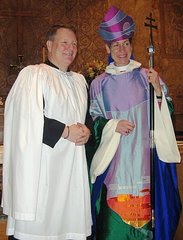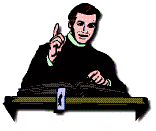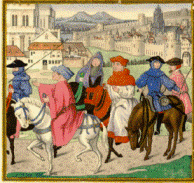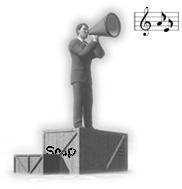Ok, this one suckered me in -- I admit it. But I'm ashamed of what I fell for. The cover, for one. In a book buying spree, I spotted this at Barnes & Noble and immediately twigged that the cover was taken from a Hans Holbein painting. A short perusal proved me right.  It's a detail of Holbein's group portrait of the family of Sir Thomas More (at right). A few years ago I read Peter Ackroyd's excellent biography of More, so I was intrigued. Turns out that the novel is based upon the portrait in part. It seeks to tell the story of one of More's adopted daughters featured in the portrait about whom very little is known.
It's a detail of Holbein's group portrait of the family of Sir Thomas More (at right). A few years ago I read Peter Ackroyd's excellent biography of More, so I was intrigued. Turns out that the novel is based upon the portrait in part. It seeks to tell the story of one of More's adopted daughters featured in the portrait about whom very little is known.
Ok, ok -- my interest is peaked, and I'm on a bit of a post-semester, give me something fun to read buying spree, so I picked it up. I was hoping for a sort of The Other Boleyn Girl kind of light, but reliable historical fiction set in my favorite era. Plus it involved Holbein's portraits from the Tudor period, some of which I've seen at the National Portrait Gallery in London. What could be better, eh?
Well, I wound up being pretty disappointed. Portrait is one of those historical novels that gives its characters much too much of a modern sensibility. Characters have an interior life and sociological expectations that are much more 20th century than 16th century. The More family was extraordinary, but not that extraordinary. Additionally, the writer resorts to one of my pet peeves, which seems to show up all too frequently in historical and mystery fiction. She advances her plot and storyline by having her characters "think out loud" in the text. So connections between plot points and events are given to the reader as a particular character's interior monologue. I think this is lazy writing, as if Hans Holbein or Margaret Clement would, in the 16th century, have carried on such a linear, narrative-supporting thought processes. And as if the 21st century reader can't do his own thinking while reading. So,you're reading and long and come across incredibly detailed character thought narration that contains totally non-random, carefully organized plot/character details that the author couldn't get into the narrative more artfully. I hate it when that happens!
As it turns out, the novel builds it's main story line around a bit of a crack-pot theory that some fellow by the name of Jack Leslau has articulated (see http://www.holbeinartworks.org/) about the differences between the two extant versions of Holbein's group portrait of the Mores. The theory (SPOILER ALERT) winds up involving Richard III and the Plantagenet princes supposedly murdered in the Tower of London just before the Tudor rise to power. Richardians will relish this plot line. Historians should and will hate it. The device of the unacknowledged heir to the throne belongs in the 'boy's literature' of a few centuries ago. It's beyond a cliche and altogether too Da Vinci Code-esque. And Bennett doesn't handle this most significant of her plot devices all that well, never really giving a believable account of her hidden heir's motivation for staying hidden.
Towards the end, the novel devolves into melodrama as undiscovered parentages are uncovered everywhere. The notoriously moral More family turns out to be a hotbed of illicit sex and illegitimate parentage along the lines of Footballers Wives. The combination of the hidden heir conspiracy coupled with the everybody's-getting-jiggy-and-no-one's-shooting-a-blank storylines sink the novel under their combined weight of improbability. Vanora Bennett is no Phillipa Gregory, nor is she a Dan Brown. And that makes her truly pitiable and her novel regrettable.
My rating (out of a possible four):










No comments:
Post a Comment